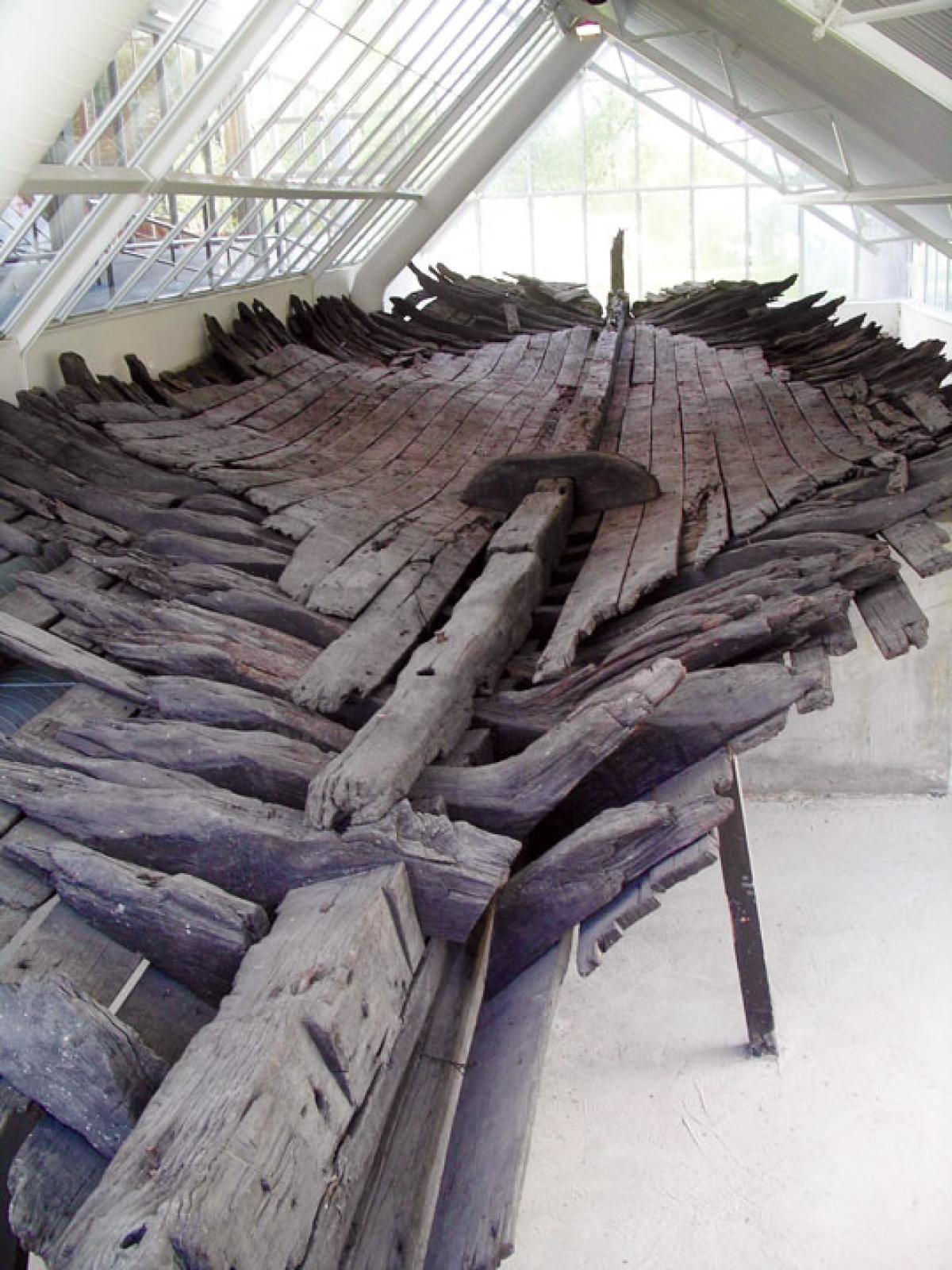Among its many battles and skirmishes, the War of 1812 brought a sharp contest at Wasaga Beach, Ontario, along the sandy shores of Lake Huron’s Georgian Bay. It was here that HMS Nancy, an unlikely warship, wrote herself into the annals of Canadian lore. Her gripping story is the basis of one of Canada’s least-known maritime museums, Nancy Island Historic Site.
Located amid the slow-flowing Nottawasaga River, the Nancy Island Historic Site is secluded from the frivolity at nearby Wasaga Beach, the longest freshwater beach in the world. The site, with its theater, museum, and lighthouse, marks the location of HMS Nancy’s fatal battle against three American schooners in August 1814.
The Nancy was launched in 1789 as a merchant vessel specifically for the fur trade. At the outbreak of the War of 1812, the British government requisitioned the merchantman. Though intended as a supply-and-support vessel, she was described as being capable of mounting six 4-pounder guns and six small swivel guns. It is unlikely, however, that she was ever so lavishly outfitted.
By 1813, under the command of Captain Alexander MacIntosh, the Nancy had been forced to retreat to Lake Huron after three American vessels attacked her on the St. Clair River. She refitted and wintered in Sault Ste. Marie. In July 1814 an American squadron set sail from Detroit to blockade Fort Michilimackinac. Lieutenant Miller Worsley, the Nancy’s new skipper, realized he could not hope to fight the squadron and instead hid the tiny vessel a short distance up the Nottawasaga River at Wasaga Beach. Unfortunately, three American vessels, the Niagara, Tigress, and Scorpion, discovered the ship and opened a fierce cannonade. Worsley resolved to put up a stiff fight, but an American shell ignited his powder and set the Nancy alight. She burned to the waterline and sank, and her crew retreated into the forested interior.
Lieutenant Worsley knew Fort Michilimackinac needed resupply. He loaded badly needed provisions aboard a number of bateaux and rowed 360 miles to the besieged island. Afterward, not content to sit idly behind the protective walls of the fort, Worsley led a boarding party that quickly scaled the sides of the Scorpion and overpowered her crew. When the unsuspecting Tigress approached, she too was captured. In one stroke, the blockade of Fort Michilimackinac had been lifted and American naval dominance reversed.
In the aftermath of the war, the sunken hull of the Nancy disappeared from sight as currents silted over her charred timbers. In time, a small island formed over the wreck, completely masking her presence. It would be more than a century before the ship resurfaced. In 1925, archaeologists uncovered her remains, still remarkably well preserved and largely intact. Interest soared, and on 14 August 1928 the hull was raised to become the centerpiece of the Nancy Island Historic Site.
The site has benefited from tourist dollars that have allowed it to expand significantly since its founding more than 80 years ago. The skeletal and fire-blackened hull of the Nancy, safely displayed inside an environmentally controlled glass case, is the centerpiece exhibit. Telling the ship’s story—and by extension the broader history of the War of 1812—is a sizable interactive museum and a theater that presents an engrossing ten-minute documentary film. Throughout the park-like setting are reminders of the war, including cannon, anchors, and bateaux. Visitors love climbing the steps of the three-story replica lighthouse, which offers stunning views of the surrounding area and a context for the battle fought here two centuries ago.
Last summer Nancy Island also played a pivotal role in “Wasaga under Siege,” the largest annual War of 1812 re-enactment in the region. The event re-created in broad strokes the demise of the Nancy. The naval skirmish at Wasaga Beach was played out by more than 500 living history aficionados from across Canada and the northern United States. Thanks to “Wasaga under Siege,” new attention has been cast on the Nancy, an unlikely little warship that fought and died gamely.
Nancy Island Historic Site
Mosley Street, Wasaga Beach, Ontario, Canada L9Z 0C4
Tel.: Nancy Island Historic Site: 705-429-2728
Wasaga Beach Provincial Park Head Office: 705-429-2516
www.wasagabeachpark.com
Open daily 1000–1800, 8 June–3 Sept.; weekends through 8 Oct.
Admission free



